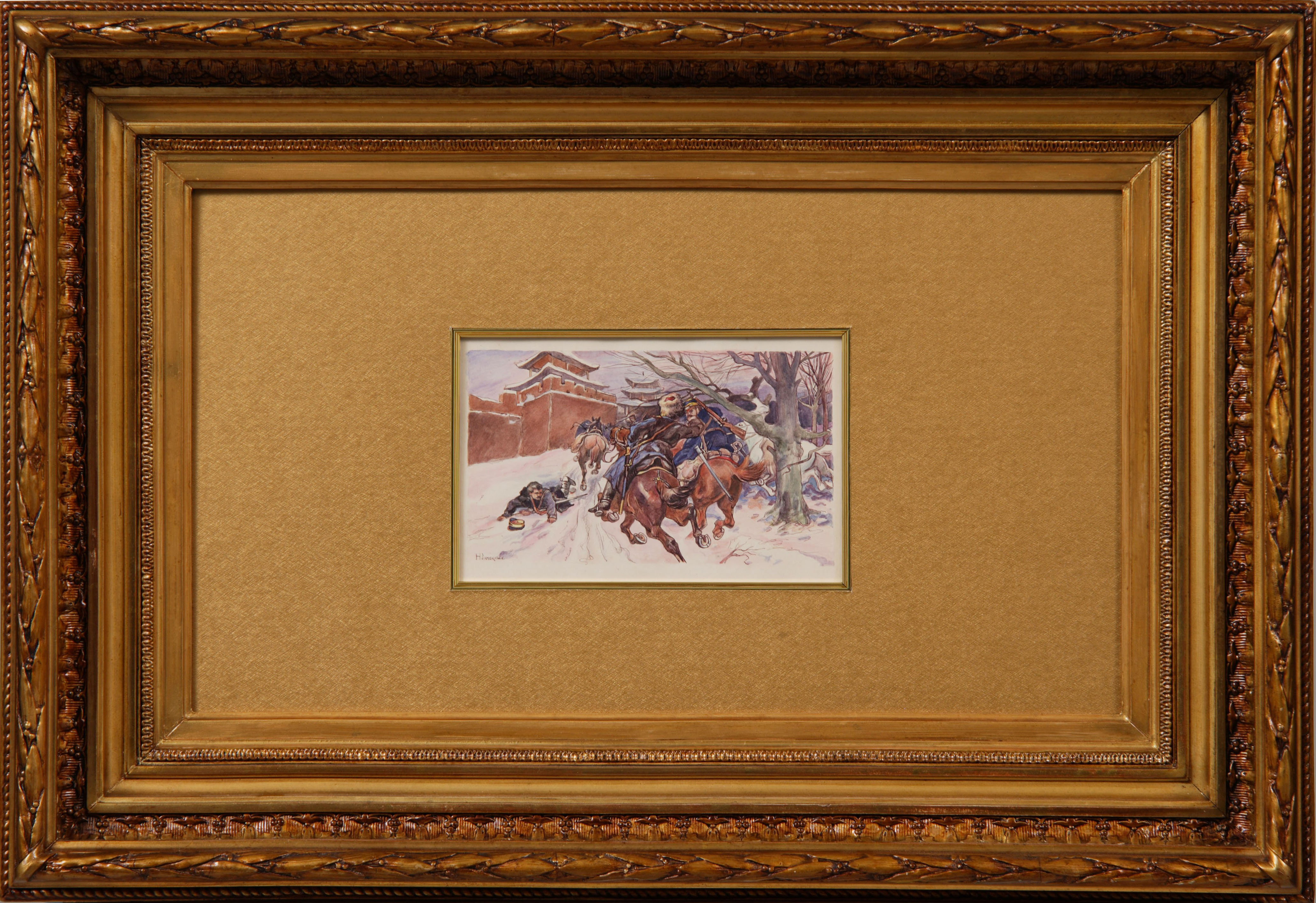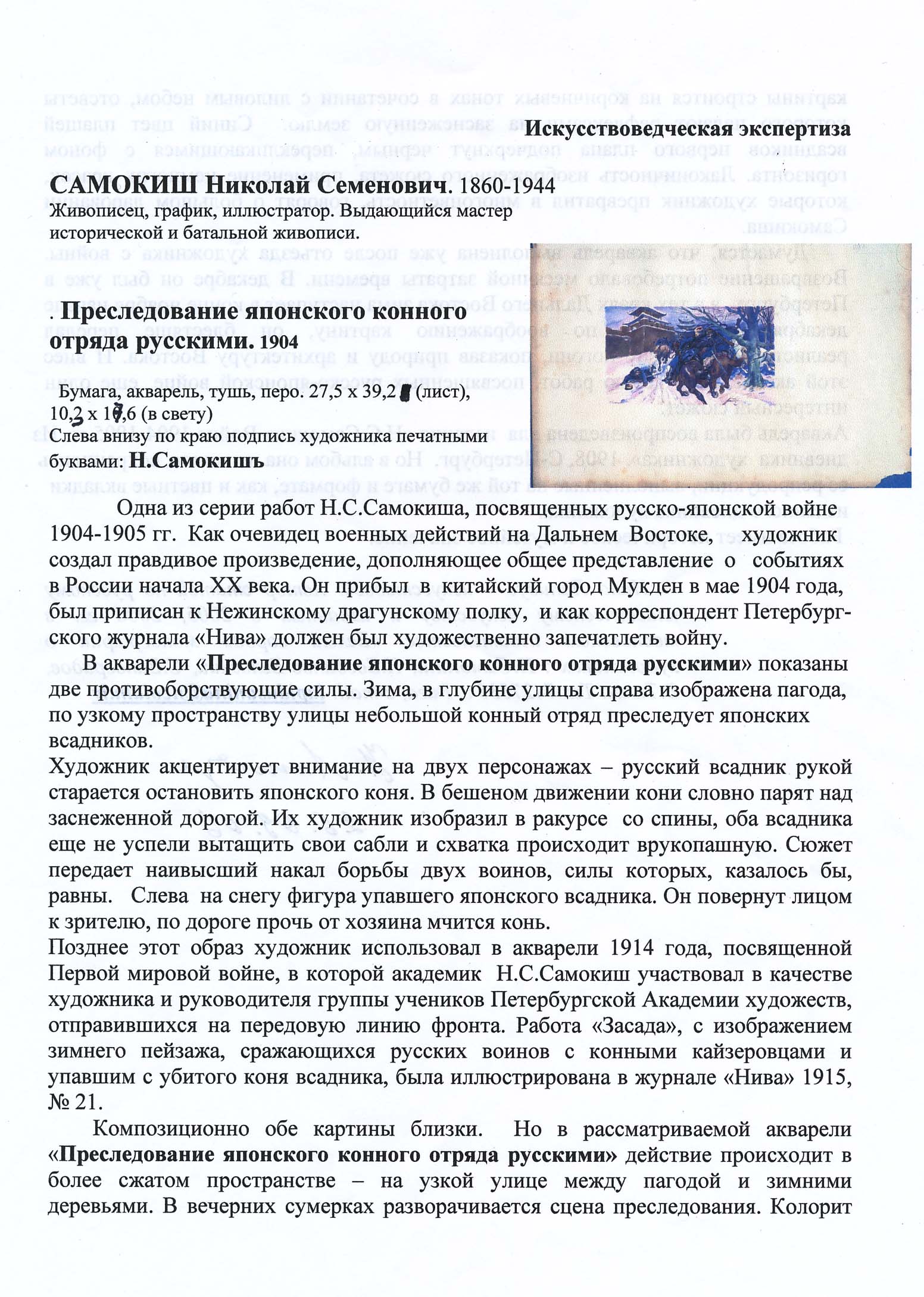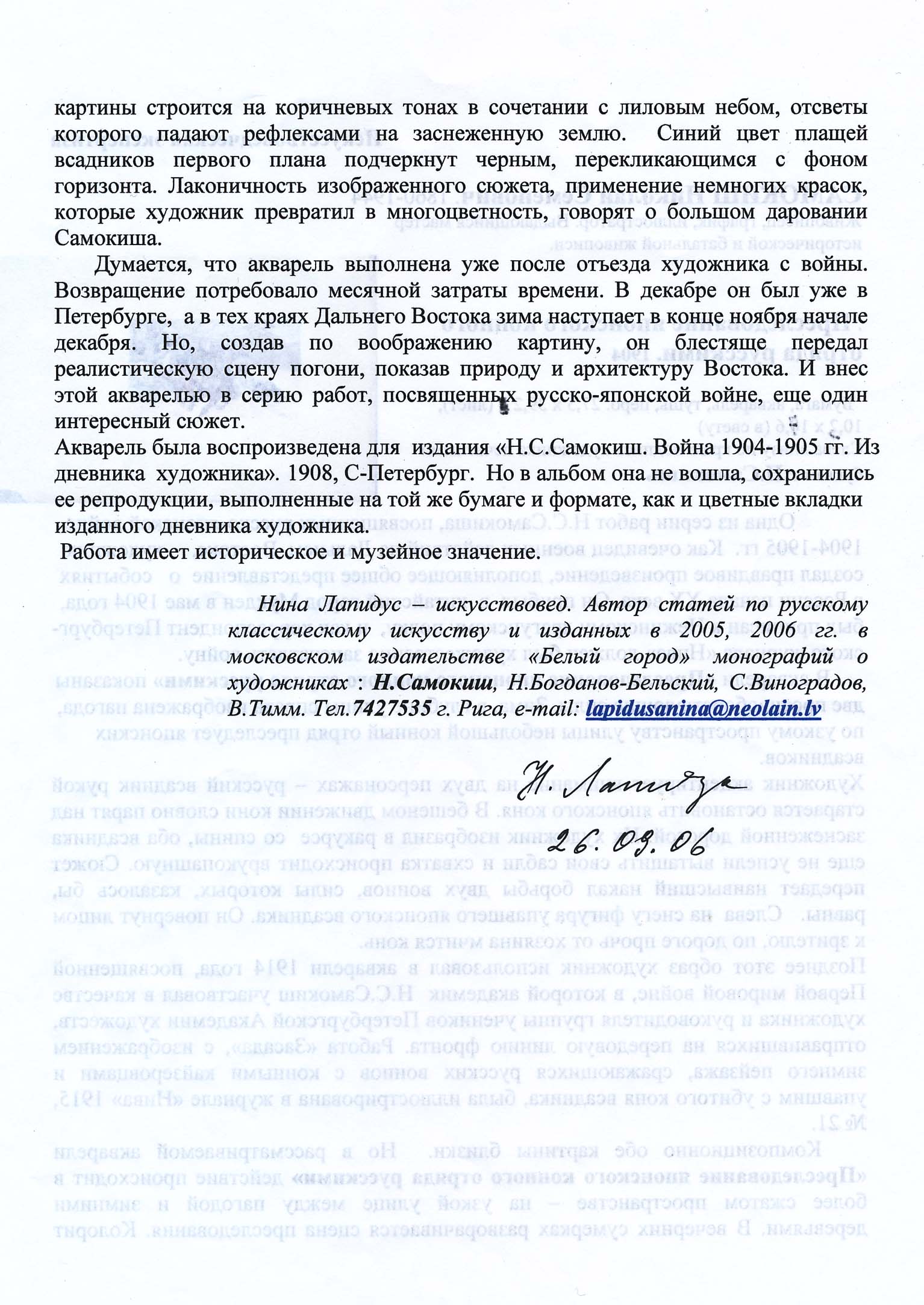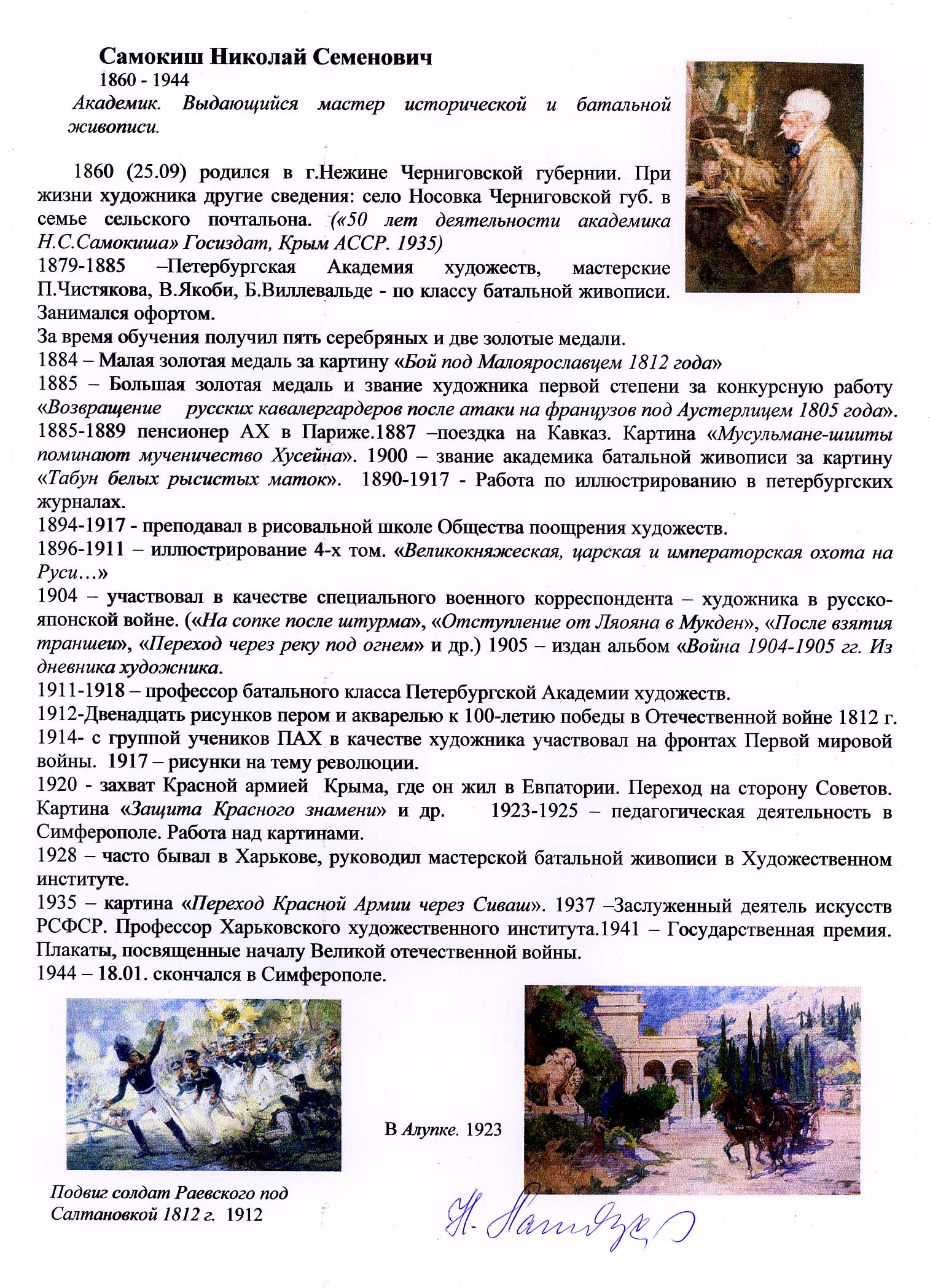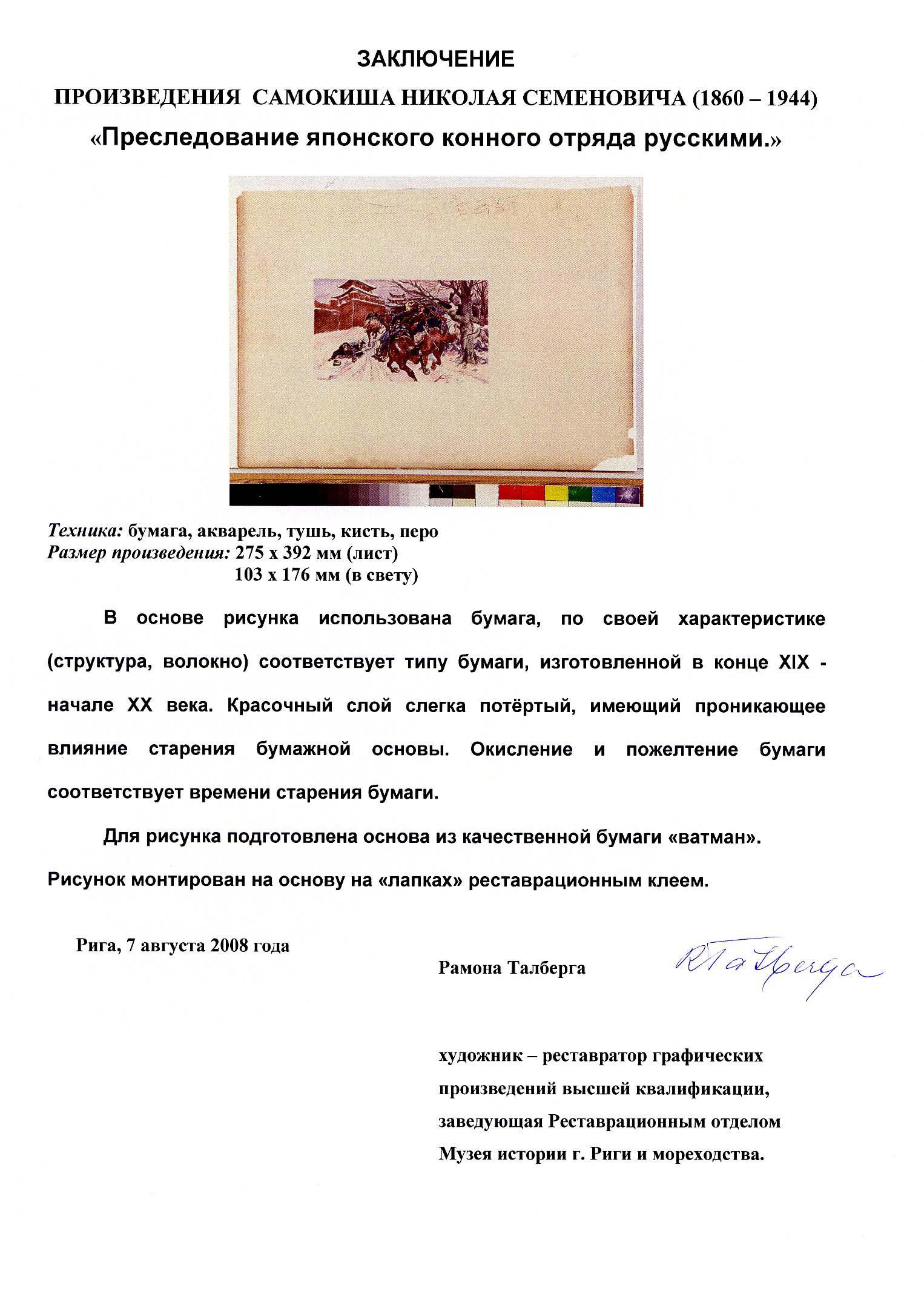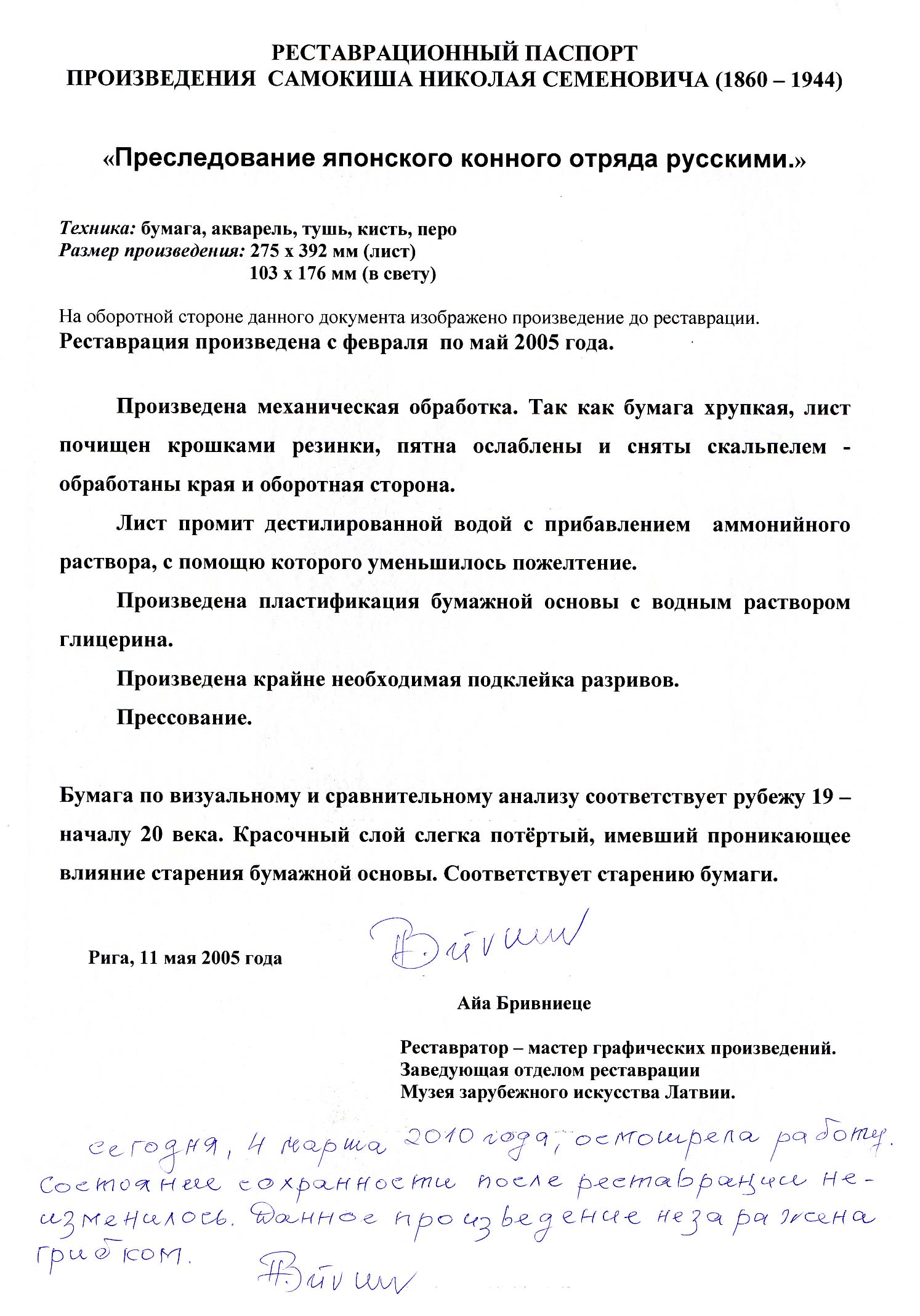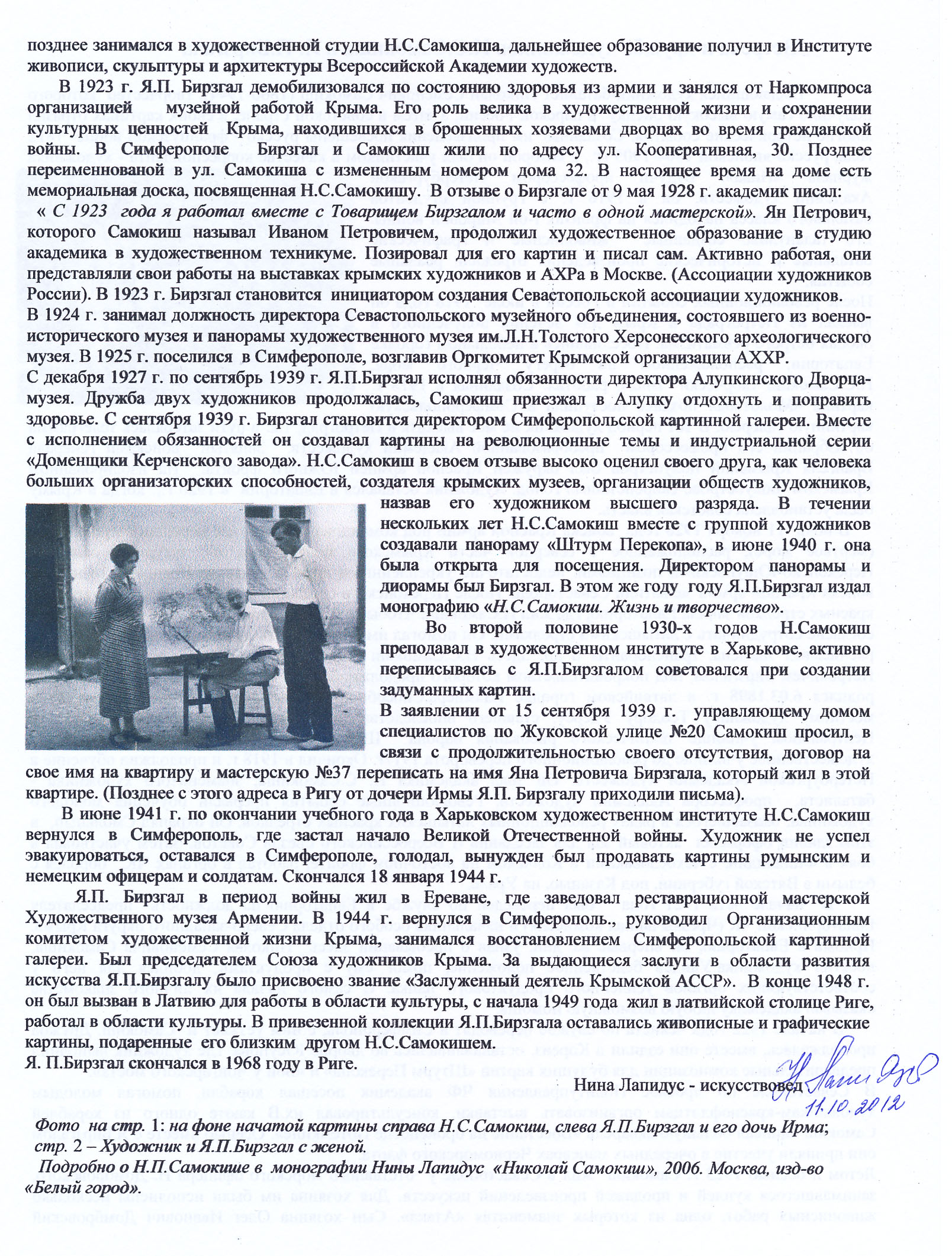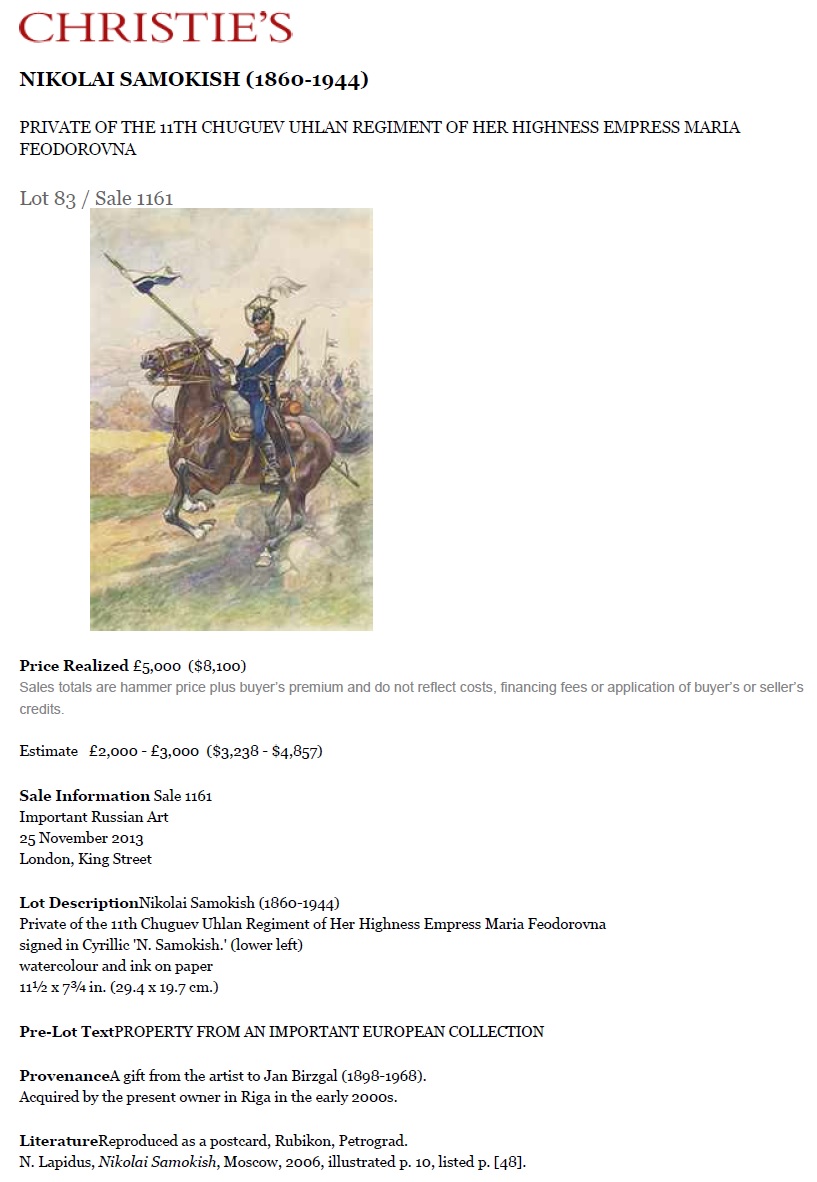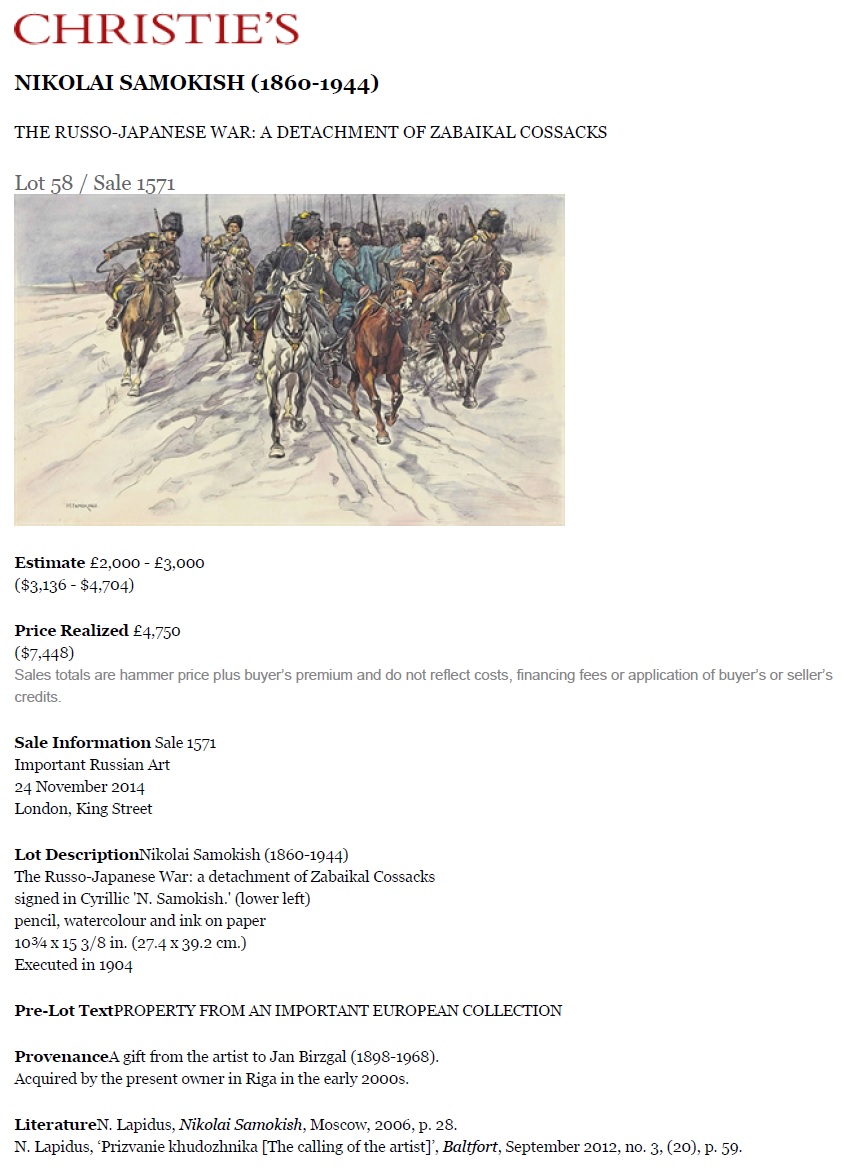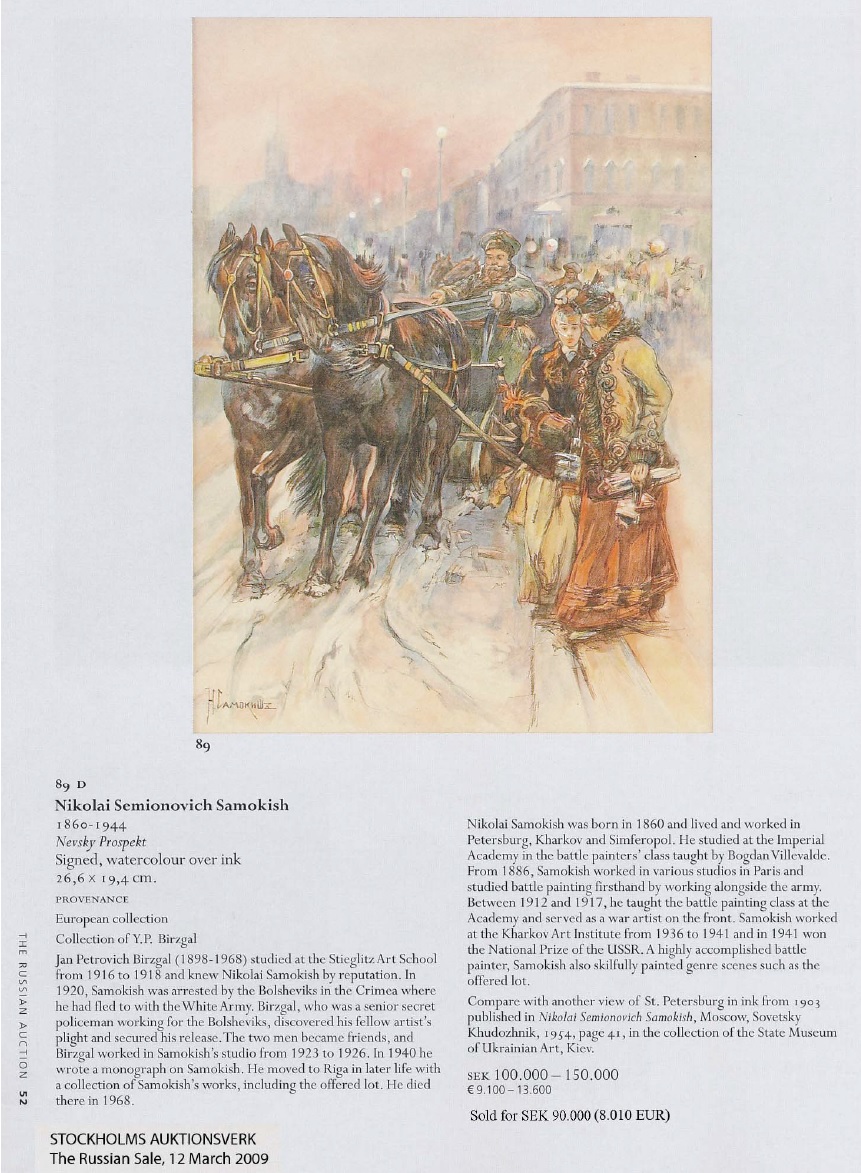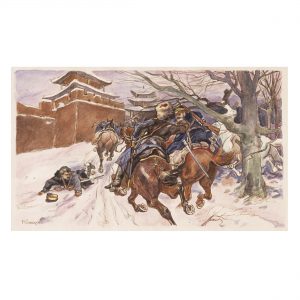Samokish Nikolai (Mikola) Semenovich – the most famous battle painter of Russia and Ukraine.
Depicted in his paintings events from several wars: Patriotic 1812, Russian-Japanese 1904-1905, World War I 1914. He participated in the last two as an artist on the front lines. The artist was a direct witness of the revolutionary and subsequent events in Russia.
In 1890, he received the title of academician. Since 1910, he was a professor and head of the battle-painting studio at the Academy of Arts in St. Petersburg. After the revolution, he was a professor and head of the battle-painting studio at the Kharkov Art Institute.
The paintings of the academician of battle painting, Nikolai Semenovich Samokish, are presented in the following museums:
1. The State Russian Museum, St. Petersburg;
2. State Hermitage Museum, St. Petersburg;
3. Scientific-research Museum of the Russian Academy of Arts, St. Petersburg;
4. The Military Historical Museum of Artillery, Engineers and Signal Corps, St. Petersburg;
5. The State Museum of Political History of Russia, St. Petersburg (formerly The Leningrad Museum of the Revolution);
6. The State Tretyakov Gallery, Moscow;
7. Battle of Borodino Museum-panorama, Moscow;
8. Moscow Timiryazev Agricultural Academy Horse Breeding Museum;
9. The Central Armed Forces Museum, Moscow;
10. Cultural Center of the Armed Forces of the Russian Federation, Moscow;
11. The Glinka National Museum Consortium of Musical Culture, Moscow;
12. State Borodino War and History Museum and Reserve;
13. The National Art Museum of Ukraine;
14. Kharkiv State Museum of Fine Art;
15. Kharkov Historical museum;
16. Lviv National Art Gallery;
17. Odessa Fine Arts Museum;
18. Sevastopol Art Museum named after M.P. Kroshitsky;
19. Simferopol Art Gallery;
20. Sochi Art Museum;
21. Vorontsov Palace, Alupka;
22. The Mykolaiv Art Museum;
23. Poltava Art Museum;
24. Chernihiv Historical Museum;
25. Pskov state United historical-architectural and art Museum-reserve;
26. Primorskaya Gosudarstvennaya Kartinnaya Galereya, Vladivostok;
27. Surikov Krasnoyarsk Art Museum;
28. Buryat Republican Museum of Art T.S.Sampilov, Ulan-Ude;
29. Azerbaijan National Museum of Art, Baku;
30. Georgian National Museum Shalva Amiranashvili Museum of Fine Arts, Tbilisi;
31. Vilnius State Museum of Art, etc.

